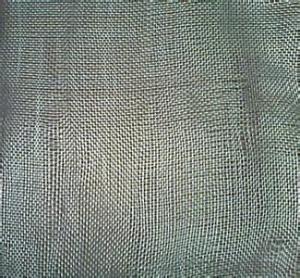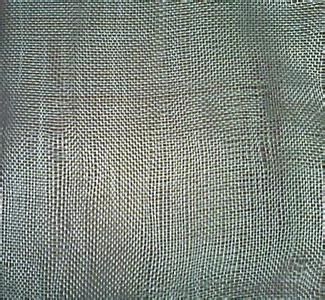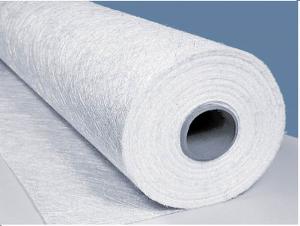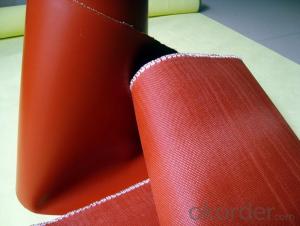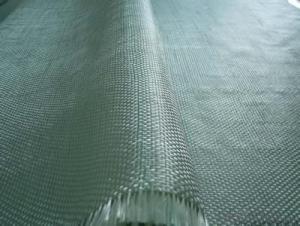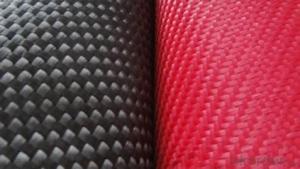High Quality China Fireproof Fiberglass Fabrics Silica Fiber Glass Cloth
- Loading Port:
- China Main Port
- Payment Terms:
- TT OR LC
- Min Order Qty:
- -
- Supply Capability:
- -
OKorder Service Pledge
OKorder Financial Service
You Might Also Like
Product Description
Texturized glass fiber cloth is made by texturized yarn with high temperature resistance, high strength after puffing process .Texturized glass fiber cloth is a new type of fabric developed on the basis of continuous glass fiber filter cloth. Due to the yarn is fluffy and have good air permeability, which can improve the filtering efficiency, reduce the filtration resistance, higher dust removal efficiency can reach more than 99.5%.Texturized glass fiber cloth is mainly used for high temperature and high strength etc. For example: cement, carbon black, steel, metallurgy, lime kiln, thermal power and coal industries.
Product Features
1 resistant to ozone, oxygen, light and climate change
2 high strength, high modulus, low shrink, no deformation.
3 incombustible.Heat insulation ,heat preservation.
4 higher than working temperature, still keep residual strength.
5 corrosion resistance.
6 electrical insulation
- Q: Can fiberglass fabric be used for filtration in water treatment plants?
- Yes, fiberglass fabric can be used for filtration in water treatment plants. It is commonly used as a filtration medium due to its high strength, durability, and resistance to chemicals. Additionally, fiberglass fabric has excellent filtration properties, effectively removing impurities and particles from water, making it an ideal choice for water treatment applications.
- Q: The pipe is too hot. What's the protection?
- Heat insulation cotton with high temperature resistance, easy combustion, low coefficient of heat conductivity, is now widely used in the insulation cotton industry is made of glass fiber and material processing, such as glass cotton, glass cotton.
- Q: How is fiberglass fabric used in the production of protective gloves?
- Fiberglass fabric is commonly used in the production of protective gloves due to its unique properties that make it an ideal material for providing protection against various hazards. The fabric is made from fine fibers of glass, which are woven together to create a strong and durable material. One of the key benefits of using fiberglass fabric in protective gloves is its excellent heat resistance. The fabric can withstand high temperatures without melting or degrading, making it suitable for applications where heat protection is crucial. In industries such as welding, metalworking, or firefighting, where workers are exposed to extreme heat or flames, fiberglass fabric gloves can provide a reliable barrier against thermal hazards. Furthermore, fiberglass fabric is highly resistant to cuts, abrasions, and punctures. This characteristic is crucial in industries such as construction, manufacturing, or automotive where workers handle sharp objects or work with machinery that poses a risk of injury. The fabric's durability ensures that the gloves can withstand the rigors of these environments, preventing cuts or punctures from occurring and offering reliable protection to the wearer. Another advantage of fiberglass fabric is its resistance to chemical exposure. Many industrial jobs involve handling hazardous chemicals or substances that can cause skin irritation or burns. Fiberglass fabric gloves act as an effective barrier against these chemicals, preventing direct contact and minimizing the risk of harm. Additionally, fiberglass fabric gloves are lightweight and flexible, allowing for dexterity and ease of movement. This is particularly important in industries where workers require precise hand movements, such as electronics, precision engineering, or laboratory work. The gloves enable the wearer to maintain a high level of control and grip, while still providing the necessary protection. In summary, fiberglass fabric is used in the production of protective gloves due to its exceptional heat resistance, cut and puncture resistance, chemical resistance, and flexibility. By leveraging these properties, fiberglass fabric gloves ensure the safety of workers in various industries, protecting them from thermal hazards, cuts, abrasions, chemical exposure, and allowing for precise hand movements.
- Q: How does fiberglass fabric perform in fatigue resistance?
- Fiberglass fabric demonstrates excellent fatigue resistance properties. Due to its high tensile strength, flexibility, and light weight, it can withstand repeated loading and cyclic stress without experiencing significant degradation or failure. This makes it an ideal material for applications that require endurance under constant or fluctuating mechanical forces, such as in the aerospace, automotive, and marine industries. Additionally, the inherent corrosion resistance of fiberglass further enhances its durability and long-term performance in fatigue-prone environments. Overall, fiberglass fabric is known for its exceptional fatigue resistance, ensuring its reliability and longevity in demanding applications.
- Q: Is fiberglass fabric resistant to mold or mildew growth?
- Fiberglass fabric is indeed resistant to the growth of mold or mildew. Its non-porous nature makes it unsuitable for mold or mildew to thrive. Furthermore, a protective coating is often applied to fiberglass fabric to enhance its resistance to these undesirable organisms. As a result, fiberglass fabric is widely favored in applications that require moisture resistance, such as boat covers, outdoor furniture, and shower curtains. Nevertheless, it is crucial to note that even though the fabric itself repels mold and mildew, other factors like moisture levels and proper maintenance can still contribute to their growth on the fabric's surface.
- Q: Directions for use of polyester fiberglass fabrics
- We must be careful in handling polyester fiber cloth. If the cloth roll to drop down from the vehicle, will damage the polyester fiber, resulting in practical problems.That if there is a fringe installation, in any direction on the pavement is greater than 2.5 cm stripes must be cut and stacked together, and the hand will overlap in the asphalt layer. At the immersion in polyester fiber cloth must use roller or brush, to ensure that it is with the road full contact and remove bubbles. The width of hot asphalt must be coated polyester fiber cloth width plus 4 inches. The polyester fiber cloth to curve surface is not easy to bend or stretch. The installation on the surface can be truncated cloth, can be mechanically or manually installed.For the polyester fiber cloth can be used when installing a tractor or truck drag with metal roller mechanism, the metal roller is to ensure the preparation of polyester glass fiber cloth spread on the road. In the installation and must be installed behind a row of brush, which will be pressed in the polyester fiber asphalt coating. We must ensure that in the length direction a 5.1 cm composite layer joint polyester fiber cloth in the width direction in a layer 10.2 cm. Lateral joint top must be along the pavement, all joints must be lapped together.
- Q: Are there any health risks associated with exposure to fiberglass fabrics?
- Yes, there can be health risks associated with exposure to fiberglass fabrics. Fiberglass is made of tiny fibers that are sharp and can easily become airborne when the fabric is disturbed or damaged. When these fibers are inhaled or come into contact with the skin, they can cause irritation, itching, and redness. Prolonged exposure to fiberglass fibers can also lead to more serious health issues such as respiratory problems, lung damage, and even cancer. In addition to direct contact, fiberglass fabrics can also release small particles into the air, making them a potential respiratory hazard. Breathing in these particles can cause coughing, wheezing, and shortness of breath. People with pre-existing respiratory conditions such as asthma or chronic obstructive pulmonary disease (COPD) may be particularly susceptible to these effects. To minimize the health risks associated with fiberglass fabrics, it is important to take precautions when working with or around them. This includes wearing appropriate personal protective equipment such as gloves, goggles, and a respiratory mask to prevent direct contact and inhalation of the fibers. It is also important to handle fiberglass fabrics carefully to avoid damaging them and releasing fibers into the air. If you suspect that you have been exposed to fiberglass fibers and are experiencing any symptoms such as skin irritation or respiratory issues, it is advisable to seek medical attention. A healthcare professional can assess your condition and provide appropriate treatment if necessary.
- Q: What are the characteristics of glass fiber acoustic panels?
- To effectively control and adjust the reverberation time, reduce noise, improve the sound absorbing ceiling. Glass fiber has the heat insulation performance is very good, for air-conditioned venues, can reduce the indoor temperature outside, so as to effectively save energy. The glass fiber acoustic ceiling almost does not absorb moisture from the air, moisture resistance is excellent, can flatness from size to stability in any humid environment.
- Q: Can fiberglass fabric be used for making air ducts?
- Yes, fiberglass fabric can be used for making air ducts. It is a lightweight, durable, and fire-resistant material that is commonly used in HVAC systems for its excellent insulation properties.
- Q: Glass fiber cloth, heat conduction double sided adhesive tape and no material heat conduction double sided adhesive tape difference? Which is better?
- No substrate thermal tape: from paper (film) material coated with (elastomer pressure-sensitive adhesive or resin adhesive, acrylic pressure-sensitive adhesive, etc.) made of rolls or sheets of adhesive tape, adhesive, is composed of isolation paper (film) parts. It is directly coated and pressed by acrylic adhesive. The adhesive tape is transparent, and the thickness is 0.06~0.25mm. It has good adhesion. Can replace screws, has excellent thermal performance, good processability, good temperature resistance, good dimensional stability, good chemical stability, good thermal stability, the initial viscosity and lasting strong adhesion can be applied to a wider temperature range and bad environment, the long-term temperature of 80~95 DEG C, the temperature is 180~205 DEG C resistance short period.
Send your message to us
High Quality China Fireproof Fiberglass Fabrics Silica Fiber Glass Cloth
- Loading Port:
- China Main Port
- Payment Terms:
- TT OR LC
- Min Order Qty:
- -
- Supply Capability:
- -
OKorder Service Pledge
OKorder Financial Service
Similar products
Hot products
Hot Searches
Related keywords
